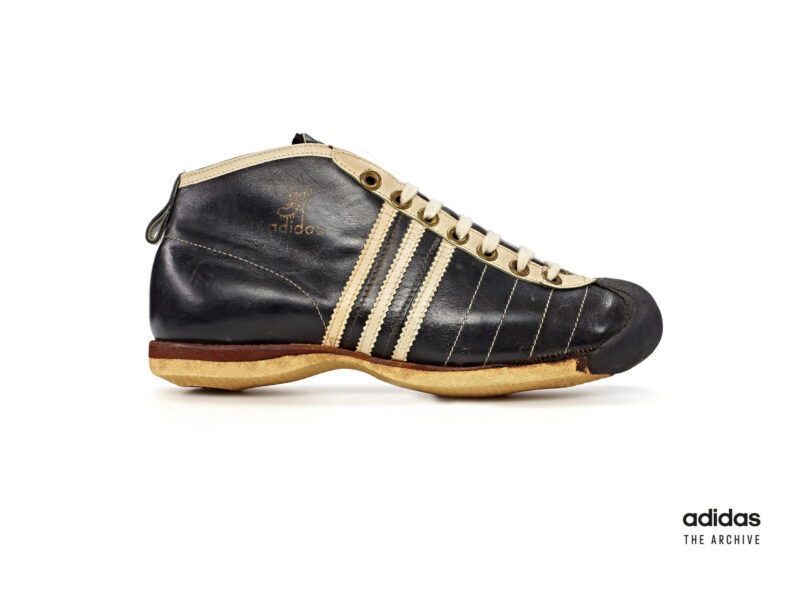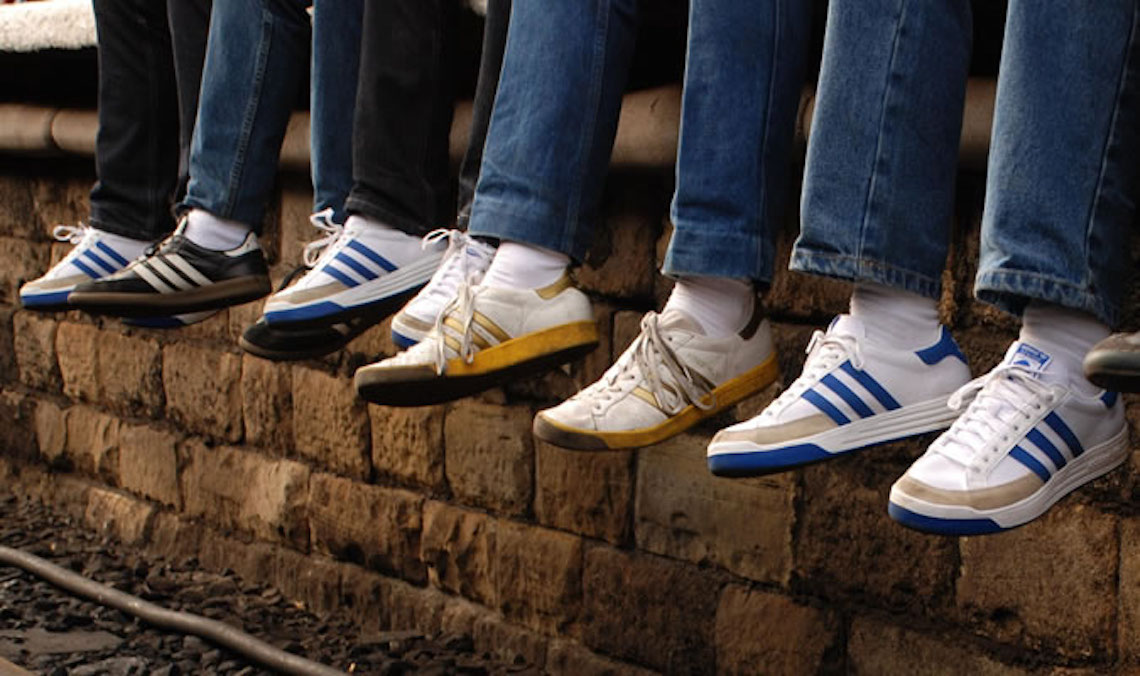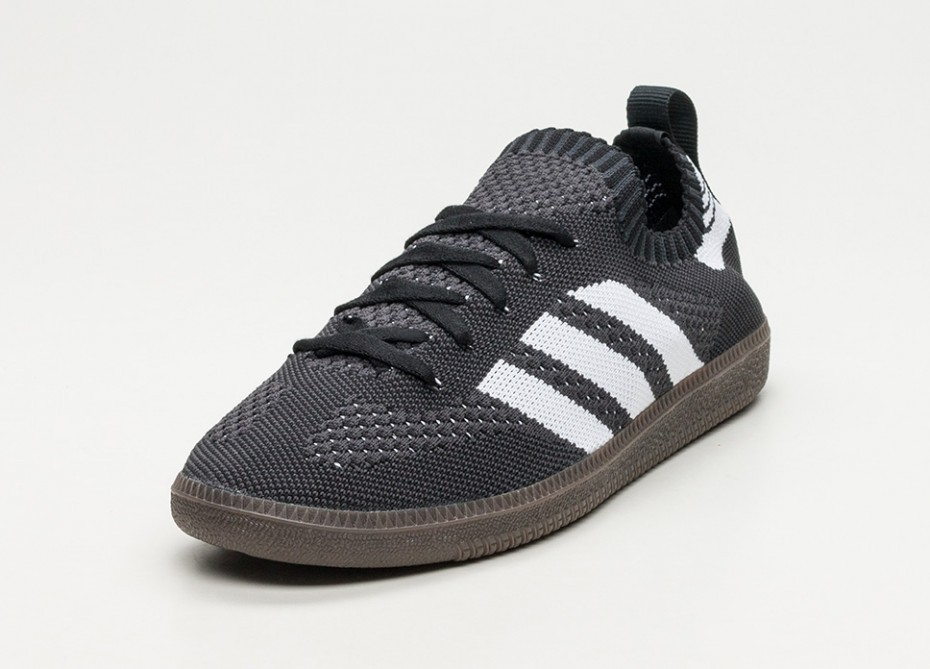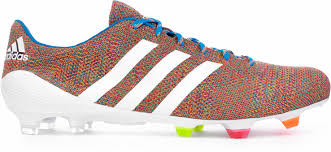Adidas Samba

Every great brand has a few timeless designs with which it will always be linked. The Superstar and Stan Smith are two of adidas' most popular models, but the Samba is possibly the most important. Today, it's a fashion standard, particularly in casual culture, although we all know the shoe has technical roots in the beautiful game.
Many people believe that the adidas Samba football shoe's history begins and ends with it being an indoor sneaker, whereas in actuality, it has far colder origins. The original Samba was created in the late 1940s by adidas creator and namesake Adi Dassler for usage on icy terrain. Its popularity hasn't waned even after seventy years.
Genesis and Name Origins

Prior to the invention of the Samba in the early-mid twentieth century, players found it difficult to play on cold pitches since the conventional boots of the time had the edge needed to hold the surface firmly. As a result, adidas set out to create a sporting gear that would make it easier to play and practice on icy surfaces. adidas created a boot with a Kangaroo leather upper and a groundbreaking gum outsole that provided excellent ground traction. As a result, the Samba was created.
The 1950 FIFA World Cup in Brazil was on the horizon, and the calendar for the global showpiece was slated for three weeks from late June to mid-July. adidas wanted to unveil their revolutionary boot on the world’s biggest stage, but there was a bit of a problem.
The Samba was initially designed to be used in harsh European winters, and even though June and July are the peak of winter in Brazil, Rio de Janeiro isn’t particularly known for its frigid climate.
adidas knew that the World Cup was a perfect opportunity to get their new shoe on the map, and they had to make it a must-have for the players headed to Brazil. As footballer endorsements weren’t nearly where they’re at today, they were forced to come up with a marketing strategy that was just as innovative as the shoe itself.
They decided to name the shoe the Samba, after an indigenous Brazilian dance and music genre. Aligning the name of the shoe with Brazilian culture made it seem as if players needed to use it at the games. It worked — and the adidas Samba would go down in history as one of the most iconic shoes of all time.
Crossover From Icy Grounds

The Samba quickly crossed over from being used only on frozen grounds to other sporting disciplines and activities. By the early ’70s, 5-a-side futsal started gaining traction in Europe and the Samba became the boot of choice due to its traction on hard surfaces. The burgeoning popularity of the sport in Europe also grew with the Samba. In fact, the Samba was one of the only futsal boots on the market for quite a while, until rival brands like Nike and PUMA got in on the mix in the late ’90s.


It was also in the ’90s where the Samba was becoming popular among skateboarders. For a very long time it was a common skating accoutrement until adidas decided to craft a Samba-inspired skate-specific sneaker, the Busenitz, in 2006.
In Africa, until recent times when boots with studs and blades became common, it was hugely popular among amateur footballers and those who played lower-tier football. It was a perfect item for the hard and sandy pitches they played on. Studs were highly discouraged not only because one could easily hurt an opponent during play, but more importantly, metal studs were known to cause waist and knee deformities if continuously used on hard surfaces. As such, flats were highly preferred, and the Samba was a real favorite.
Sporting Field to Casuals

As expected with a sneaker in production for 70 years, the adidas Samba has undergone several changes in its history. The models developed in the ’70s and ’80s offered a lifestyle appeal that particularly resonated with a rising wave of British youths of the time.
Clad in argyle sweaters, polos, and the ubiquitous Samba, “casuals” were a mainstay of football terraces throughout the era, and they breathed a new life into the already popular shoe. Today’s Samba addicts owe casuals a huge gratitude as they played a key role in making it a timeless classic.
Samba Offshoots

The Samba is still evolving today, and a side-by-side comparison of the current model to the original model from 1950 demonstrates exactly how far it has progressed.
The Samba is now available in four variants from adidas. The OG and Classic, which have comparable construction with a few slight modifications, the Super, which is inspired by 1970s and 1980s casual classics, and the Sambarose, a women's variant with an elevated platform outsole.


The Samba Primeknit, the world's first knitted football boot, was produced by adidas in 2014. While it has no similarity to the Samba, its groundbreaking technology makes it a fitting successor. The indoor edition received the Primeknit treatment as well, giving it a sock-like contemporary spin on a classic. The Samba is inextricably linked to sneaker culture across the world, particularly in Europe. The Samba is perhaps the most important shoe of all time, from its cultural significance to its sheer durability.